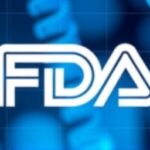SAN FRANCISCO, CA – In a alarming development for public health, two dairy farm workers in California’s Central Valley have tested positive for H5N1 Bird flu, marking the state’s first documented human cases tied directly to infected cows. Health officials confirmed the infections on Thursday, emphasizing that while the risk to the general public remains low, the cases underscore the ongoing threat of Bird flu spilling over from livestock to humans.
The workers, both employed at a large dairy operation in San Joaquin County, experienced mild symptoms including conjunctivitis and respiratory issues after close contact with sick cows. Rapid testing by the California Department of Public Health (CDPH) and the Centers for Disease Control and Prevention (CDC) verified the presence of the H5N1 avian influenza virus, a highly pathogenic strain that has ravaged poultry and dairy herds nationwide.
This breakthrough in California comes amid a surging Bird flu outbreak that has infected over 1,000 dairy herds across 17 states since late 2024, prompting heightened vigilance from federal and state authorities.
Two Dairy Workers Test Positive: Symptoms and Timeline
The first worker, a 32-year-old milker, reported eye redness and fatigue on October 15, followed by mild flu-like symptoms. He sought medical attention three days later, where nasal swabs were collected. Results came back positive for H5N1 on October 17. His colleague, a 45-year-old farmhand, developed similar conjunctivitis symptoms shortly after, testing positive the next day.
“Both individuals are recovering at home with antiviral treatment,” stated Dr. Tomas Aragon, CDPH Director, in a press briefing. “Their illnesses were mild, consistent with previous human H5N1 cases in the U.S., and neither required hospitalization.”
Importantly, genetic sequencing revealed the virus strain matched one circulating in California’s dairy cows, confirming animal-to-human transmission. No human-to-human spread has been detected, a critical factor in assessing pandemic potential.
- Key Timeline:
- October 12: Sick cows identified on the farm.
- October 15-16: Workers report symptoms.
- October 17-18: Positive H5N1 tests confirmed.
- October 19: Public announcement and contact tracing initiated.
The farm, which milks over 5,000 cows, had reported H5N1 in its herd weeks earlier, leading to quarantine measures. This marks the 15th U.S. state with human bird flu cases among dairy workers, following Michigan, Colorado, and Texas.
Cow-to-Human Jump: How Bird Flu Infiltrated Dairy Farms
H5N1, commonly known as bird flu, jumped to U.S. dairy cattle in March 2024, an unprecedented adaptation for the virus long confined to wild birds and poultry. In California, the epicenter of U.S. dairy production with over 1.7 million cows, more than 40 herds have tested positive since summer.
Veterinarians trace the spread to shared milking equipment, where virus-laden milk aerosols infect workers without proper protection. “Dairy workers are on the front lines,” explained Dr. Sarah Gregory, a UC Davis veterinary epidemiologist. “They’re handling raw milk from infected animals daily, inhaling droplets during milking.”
Raw milk testing shows viral loads up to 10,000 times higher than in poultry, per USDA data. Pasteurization kills the virus, but unpasteurized products pose risks. California has mandated testing of bulk milk tanks, identifying 25% positivity rates in affected counties.
- Wild birds contaminate feed or water sources.
- Cows ingest virus, shed in milk.
- Workers exposed via splashes, inhalation.
- Mutations enable mammal adaptation.
Farm owner Maria Lopez told reporters, “We’ve implemented PPE and ventilation upgrades, but it’s tough on a working dairy. These cases hit close to home.” The incident has spurred $10 million in state aid for biosecurity enhancements.
Health Experts Downplay Public Panic Amid Mutation Watch
Despite headlines, officials stress the low public risk. “This virus doesn’t spread easily between people,” assured CDC Director Dr. Mandy Cohen. All 40 prior U.S. human H5N1 cases since 2024 were mild, linked to animal exposure, with no secondary transmissions.
However, scientists are monitoring for mutations that could enhance human transmissibility. The current strain has a 1% mammalian adaptation score, per WHO metrics, far below pandemic thresholds. In California, 150 close contacts of the infected workers are under quarantine, all testing negative so far.
Public health measures include:
- Free testing for symptomatic farmworkers.
- Oseltamivir stockpiles for early treatment.
- Enhanced wastewater surveillance statewide.
“We’re not seeing the explosive spread seen in birds,” noted Dr. Aragon. “But vigilance is key, especially with flu season approaching.” Travel advisories remain unchanged, and no school closures are planned.
U.S. Bird Flu Crisis Expands: Dairy Herds and Poultry Toll
California’s cases fit into a national emergency. Since 2022, H5N1 has killed 100 million poultry across 50 states, costing $4 billion in indemnities. Dairy impacts emerged later: 1,300 herds affected by October 2024, with milk production down 5% nationally.
Human cases total 45, mostly dairy workers in high-density states. Michigan leads with 12 infections; California’s entry raises the West Coast stakes. Economic ripple effects include a 20% drop in raw milk prices and supply chain disruptions for cheese producers.
Internationally, H5N1 has caused 889 human deaths since 2003, mostly in Asia. U.S. strains show genetic tweaks for mammal survival, prompting WHO alerts. “This is a wake-up call for One Health integration,” said FAO representative Dr. Elena Vasquez, linking animal, human, and environmental health.
Stats highlight scale:
| Category | Affected | States |
|---|---|---|
| Poultry | 100M birds | 50 |
| Dairy Cows | 1,300 herds | 17 |
| Human Cases | 45 | 15 |
Federal Response Accelerates: Vaccines, Surveillance, and Farm Aid
In response, the USDA and HHS unveiled a $1 billion bird flu action plan last month. Key pillars include:
- A cattle vaccine trial launching Q1 2025, with 80% efficacy in ferrets.
- Expanded human vaccine stockpiles: 10 million doses ready.
- AI-driven genomic surveillance tracking mutations in real-time.
California Governor Gavin Newsom activated $50 million for dairy biosecurity grants, including robot milkers to reduce human exposure. Worker advocacy groups push for paid sick leave and hazard pay amid outbreaks.
Looking ahead, experts predict sustained circulation through 2025. “Preventive measures now could avert a worse scenario,” warned Dr. Gregory. Public tips include avoiding raw milk, cooking poultry thoroughly, and reporting sick birds. Federal labs sequence every human case, ensuring rapid threat detection.
As winter migration brings more wild birds, California ramps up farm inspections and community education. With dairy workers at the vanguard, the nation watches for signs of escalation, balancing economic vitality with health security.









